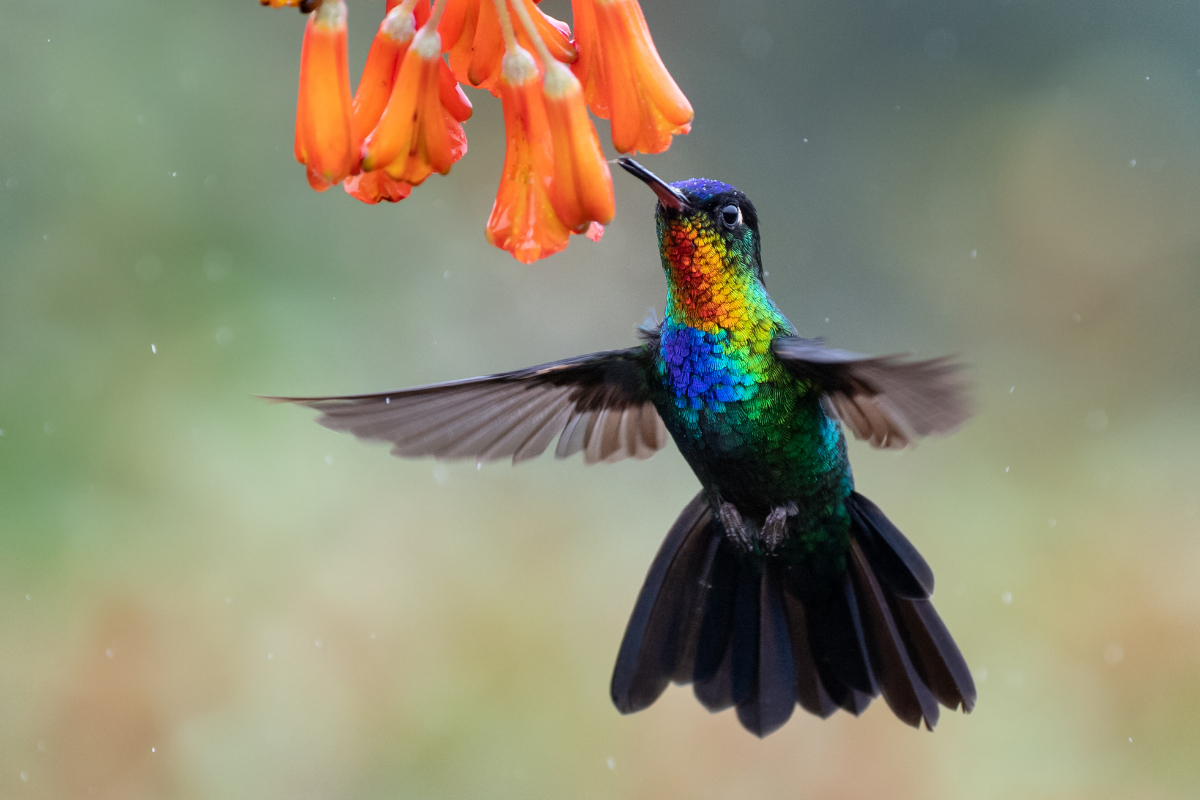Hummingbirds, the top migrant birds in the world, annually fly alone to tropical regions in search of ideal breeding grounds, nests, and abundant food. Unlike many other birds, hummingbirds do not travel in flocks. The male hummingbirds begin their migration first, followed by the females several weeks later. Indiana, also known as the Hoosier State, is fortunate to have these beautiful birds. However, when winter arrives, the hummingbirds instinctively fly south in search of warmer climates, bidding farewell to Indiana. If you’re curious about when these tiny birds leave Indiana, you’ve come to the right place.
When Do Hummingbirds Leave Indiana?
Hummingbirds in Indiana typically start their migration at the end of July, and by early October, most have left the state. However, Ruby-throated hummingbirds may still be seen in some areas of Indiana during winter, even when other species have departed. The exact departure time of these birds varies depending on the species.
Why Do Hummingbirds Leave Indiana?
Several factors trigger hummingbird migration. The reasons for their departure from Indiana can be attributed to instinct, the availability of food, and the climate. As the days become shorter and sunlight decreases, hummingbirds instinctively know it’s time to leave. Additionally, their primary food sources from flowers and insects diminish as summer ends. Indiana experiences cold, snowy winters, and hummingbirds are vulnerable to freezing temperatures, so they migrate southward to tropical regions where they can survive.
What Species Of Hummingbirds Are Commonly Found In Indiana?
The most commonly seen hummingbird species in Indiana is the Ruby-throated hummingbird. This native species can still be found in Indiana even after other migrating species have left. The Ruby-throated hummingbird is known for its brilliant iridescent green upperparts, a bright red throat or “gorget” in males, and black wings. The females have a duller green coloration above and a whitish underside. It’s important to note that the female Ruby-throated hummingbird does not have a ruby-red throat. In addition to the Ruby-throated species, Allen’s and Rufous hummingbirds can be seen migrating through Indiana in certain seasons. There are also rare migratory species, such as Anna’s, Black-chinned, Broad-tailed, Calliope, and Green-Violetas, that are not commonly seen in Indiana.
When Do Hummingbirds Arrive In Indiana?
Migrating hummingbirds typically arrive in Indiana by the end of March or early April. The Ruby-throated hummingbird can be found in Indiana year-round, even before other migrating species reach the state. However, the arrival time of these birds can vary depending on the species.
Do Hummingbirds Arrive In Different Parts Of Indiana At The Same Time?
Hummingbirds do not all migrate at the same time. As solo travelers, their arrival time varies. They first arrive in the southern part of Indiana by early April, then reach central Indiana by mid-April, and finally grace the northern regions of Indiana with their presence by late April to early May. If you haven’t seen them yet, there’s no need to worry; they are likely on their way and will arrive soon.
Where Are The Best Hummingbird Habitats In Indiana?
Hummingbirds can be found in areas of Indiana that have a variety of nectar-rich plants with continuous bloom. They are commonly found in gardens, meadows, and woodlands where their primary food sources are abundant.
How Can You Attract Hummingbirds in Indiana?
To attract hummingbirds in Indiana, you can create a welcoming habitat for them. This can be done by growing native nectar-rich and insect-friendly plants in your garden. Providing hummingbird feeders filled with a sugar-water solution is another way to attract them. It’s important to use feeders with vibrant colors like red, pink, or orange, as hummingbirds are attracted to these colors. Additionally, providing shallow water sources like misters for drinking and bathing and creating habitats with trees, tall plants, or shrubs for shelter and nesting sites can increase your chances of attracting hummingbirds.
Which Plants Can You Grow To Attract Hummingbirds In Indiana?
In Indiana, you can attract hummingbirds by growing native nectar-rich and insect-friendly plants. Some examples of these plants include crossvine, passionflower, trumpet honeysuckle, bee balm, and fire pink. It’s important to use organic pest control methods when cultivating these plants to avoid harming the hummingbirds.
When Should You Put Out Your Hummingbird Feeders In Indiana?
To attract the early set of migrating hummingbird species in Indiana, you should put out your feeders by mid-March. Male hummingbirds are typically the first to arrive in Indiana to establish their territories, followed by the females a few weeks later.
When Should Hummingbird Feeders Be Taken Down In Indiana?
Late stragglers usually leave Indiana by the end of October. If you don’t notice any hummingbirds at your feeder for up to 2 weeks, it’s safe to take them down by mid-November. However, you can leave your feeders out to feed resident species or old and injured birds that cannot migrate during the winter. Just make sure to consistently clean and refill the feeders to ensure the solution remains safe for the hummingbirds.
Where Do Indiana Hummingbirds Migrate To In The Winter?
During the winter months, many hummingbirds from Indiana migrate to warmer countries in Central America, such as Mexico, Guatemala, Belize, Nicaragua, Honduras, El Salvador, and Costa Rica. However, the Ruby-throated hummingbird is known to remain in the state during wintry weather.
Conclusion
Indiana is fortunate to have the Ruby-throated hummingbird as a year-round resident. These birds stay in the state even during winter, so you can leave your feeders out to keep them well-fed. It’s important to consistently maintain the feeders to ensure the solution remains safe for the hummingbirds. Rest assured, these migrating hummingbirds will return in the next seasons, as they have excellent memories and remember every flower or feeder they visited before.
